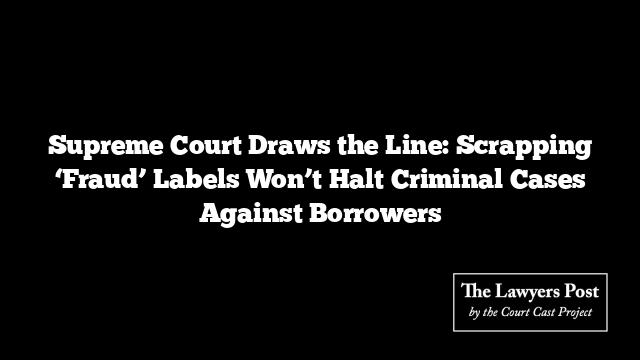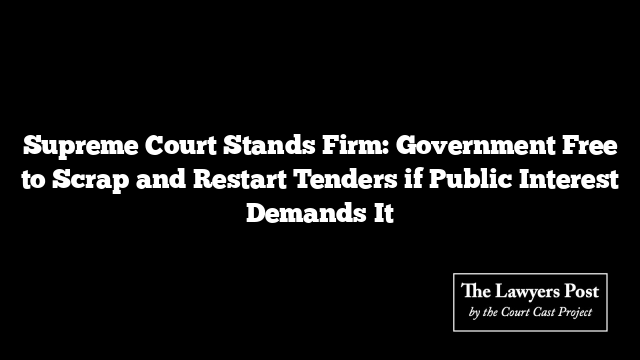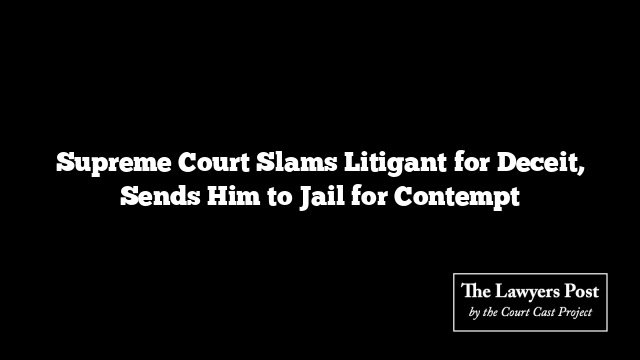In a decisive move, the Supreme Court ruled that borrowers facing fraud charges can’t simply wipe the slate clean by getting their loans’ “fraudulent” classification tossed on technicalities. Criminal investigations, the Court emphasized, run on their own tracks—and they’re not so easily derailed.
The bench, led by Justices MM Sundresh and Rajesh Bindal, breathed new life into several criminal proceedings originally kicked off by banks against borrowers. These cases had been previously shot down by High Courts after borrowers successfully challenged the fraud tag slapped onto their accounts under the RBI’s 2016 Master Directions.
Borrowers had leaned heavily on a 2023 Supreme Court ruling—State Bank of India v. Rajesh Agrawal—where it was declared that banks must first hear out borrowers before branding them fraudsters. High Courts had run with that, wiping away not just the labels but the FIRs too.
The CBI wasn’t having it. Represented by the country’s top legal brass, they argued that confusing administrative actions with criminal prosecutions was a major misstep. Administrative errors, they said, don’t dissolve criminal offenses like sugar in water.
Drawing a Sharp Line Between Administration and Crime
The Court agreed, drawing a firm boundary. FIRs, it said, are not administrative paperwork—they’re the spark that sets criminal law in motion. Just because the administrative side stumbles doesn’t mean the criminal side falls too.
“An FIR, by its nature, only checks whether a cognizable offense exists—it doesn’t depend on the validity of any administrative action,” the Court explained, cutting through the fog.
In short: banks fumbling on procedural fairness doesn’t hand a get-out-of-jail-free card to alleged fraudsters. Investigations will roll forward on their own steam.
Principles of Natural Justice? Not at the FIR Stage
The Court also brushed aside arguments that accused borrowers deserved a hearing before an FIR was even filed. Criminal law, it stressed, doesn’t require polite invitations—it requires swift action to uncover wrongdoing. Letting hearings delay FIRs would “frustrate the very purpose” of investigating crimes.
Additionally, the Court scolded the High Courts for overreaching, pointing out that many FIRs weren’t even properly challenged before being tossed.
Setting Aside Isn’t the Endgame
Even when administrative orders are axed for violating natural justice (without judging the facts themselves), fresh actions can be taken, the Court reminded. Citing an old ruling—Canara Bank v. Debasis Das—the Court reaffirmed that setting aside a defective order doesn’t terminate the underlying proceedings; it merely clears the way for a fresh, legally sound start.
Bottom line: banks and authorities can go back to the drawing board, as long as they play by the rules.
How the Court Categorized the Chaos
Facing a mountain of tangled petitions, the bench imposed order with a neat classification:
| Category | Description | Outcome |
|---|---|---|
| I | FIR challenged and set aside | Petitions revived and sent back to High Court |
| II | FIR not challenged but still set aside | Borrowers get 2 weeks to seek remedies |
| III | Interim orders passed/not passed | Interim relief to continue, no coercive steps for now |
| IV | Investigation status (ongoing/completed) | Investigations continue, but no arrests for now |
| V | CBI not made a party before High Court | CBI to be added suo motu |
The ruling serves as a stern reminder: administrative missteps won’t wash away potential crimes. Borrowers hoping to dodge fraud probes will now have a much steeper hill to climb.





